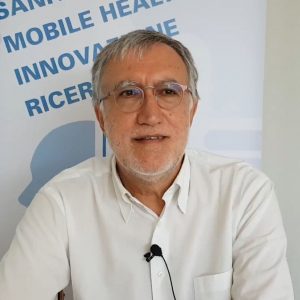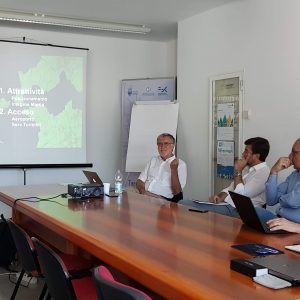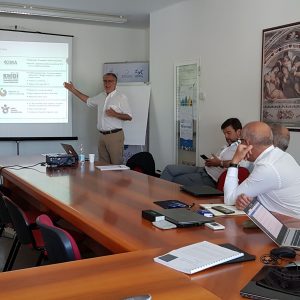Medical tourism in Europe, yesterday, today, tomorrow
Who are "medical tourists"? And why do they decide not to seek treatment at home? What is medical tourism? How to become an attractive destination in the medical tourism market? To answer these questions we met Enric Mayolas, a Spanish physician, former director of international relations at the Health Department of the Regional Government of Cataluña (Spain), one of the leading experts on the subject.
Everyone talks about medical tourism, but what is it precisely?
“Medical tourism is a worldwide phenomenon” – Mayolas explains.“It is a large industry that is increasing its turnover not only in the spa sector, but also in the treatment and specialist sector. As a global strategy, it is relatively recent. People have always been attracted by the fame of a physician and their results, but today we see an economic and social phenomenon characterized by different strategies, in which both private initiative and governments are involved”.
What kind of care are the patients travelling around looking for?
“There are those who seek treatment that is not available in their own country. There are those who travel to a structure known for offering the high quality of services they need. There are travelers who happen to have health issues while on vacation. There are those who reside in a foreign country and cannot return for treatment. There are those who cannot afford to pay for the treatment and look for a destination that offers it at a lower price. Those who travel abroad do so for various reasons but ultimately look for what they do not have in their own country. Be it lack of technology, experience or due to legal issues. Most medical patients, according to statistics, go abroad looking for better treatments for cancer treatment, for highly complex pediatrics, for PMNR and complex orthopedics”.
What features must a destination seeking to become a “medical tourism” have?
“The keys to becoming a destination of interest for patients are several: first of all they have to be attractive and therefore have a recognized positioning, image and brand. Secondly, accessibility to the destination. You must be easily accessible and therefore offer transportation, airport transfers, trains. In short, you have to facilitate the arrival and reception of people. These are services that obviously must be invested in before launching into this market, not afterwards. Then there is the offer of medical services: on which market do you want to position yourself? Wellness, aesthetic medicine, plastic surgery, balneotherapy? Or even orthopedics, cardiovascular surgery, ophthalmology, oncology, aesthetic medicine and disgnostics? In short, you must be able to identify the area in which you can offer high level of care and guarantee the skill of your physicians. Then there is the question of quality, which is critical. There is a sort of international accreditation that is conferred by the JCI[1], the Joint Commission International, by the ISQua[2] (International Society for Quality in Health Care) or by the EFQM[3] (European Foundation for Quality Management), required by insurance companies in order to reimburse treatment expenses. It is measured based on the rates of infections, results, survival, number of doctors and nurses, safety, spoken languages, effectiveness and efficiency of the services provided, security, etc. But watch out: quality should not only be recognized by insurance companies, but also by patients, healthcare systems, and brokers. If you choose a target group of patients (Russians, Arabs, Chinese?), you must prepare yourself to welcome them from a cultural and social standpoint. You should consider: what is the patient lacking when he/she goes abroad, compared to their country? And, therefore, you should offer a service that meets their needs and expectations. For example, Arabs like to have a 24-hour personal assistant who provides translation services and helps them solve any problems during their stay. That is why you have to be well prepared.Becoming an attractive destination is a matter of system, it must involve administrations and private organizations, not the single structure. If you have very good doctors but your hotels are not up to the guests’ expectations, or if there are visa restrictions, you will not become a destination for health tourism. Another factor is the price: the fee listed on the site must be very clear and offer international payment systems and in multiple foreign currencies, must include all the services, including post-isurgery support, and be fair in market terms. There must be no hidden costs or different fees for the same service”.
A rather complex scenario emerges, in which the interest of individuals, but also that of the regions and governments grows year by year. The intent is to be competitive in the European context and to attract patients and investments.
“The true market is represented” – Mayolas clarifies – “in addition to people, by the collective, namely the big companies, the provincial and national health systems, the agreements between governments. Then there are the complementary players, such as accommodation, facilitators and brokers who receive a percentage on the fee of care, or even the insurance companies themselves that push patients to go abroad due to cost reasons”.
Health care services in other countries have long been equipped to offer high quality healthcare services, for a fee.
“Health tourism does not fill hotels. There must be joint marketing planning, a brand must be created that guarantees the quality of the destination. In Germany, for example, the promotion of health tourism is a government goal. There are many examples of good practice around the world. In South Korea, the government has changed its laws in order to accomodate foreigners. In Singapore, activities related to this industry represent the second point in financial planning. In Turkey, a certified private organization obtained the partnership of the government that created a specific department in its government program. As of 2002, at the Barbados Islands, in the Caribbean, a fertility center operates that helps sterile couples from all over the world to realize their dream of having a baby, combining the tourist offer – a quiet and stress-free environment on a Paradise-like island – with high quality services”.
In Europe, there has been an EU directive on cross-border care since 2011, in force in Italy thanks to Legislative Decree No. 38 of March 4, 2014 (published in the Official Journal of the Italian Republic of March 21, 2014) which allows citizens to seek health care in another European Union country, choose their healthcare professional, and the healthcare facility where to receive treatment, obtain more easily the recognition of the prescription issued by their physician or by a physician from another Member State in order to receive drugs or medical device and claim reimbursement for the expenses incurred for the care received and the drugs or medical devices purchased[4].
These are the rights set forth by regulations, but what real impact has it had five years after its entry into force?
“Very low.”
Why?
“First of all, the directive hasn’t been widely publicized. Secondly, patients have to pay for the treatment in advance. Travel cannot be claimed for reimbursement and finally a prior authorization is required. These procedures discourage patients”.
So, in a framework of globalization and international competition, what scenario opens up for this industry, of which we do not have reliable information and statistics?
“The demand exists and it is growing. Physicians are willing to move to destinations of excellence and information among patients is circulating faster and easier. The liberalization and deregulation of the markets facilitate the growth of this industry.But the challenge is to overcome internal hindrances, such as limited technological offer, negotiation opportunities, market resistance. Unfortunately, we do not have a lot of data on the actual components industry and services connected to it and on the number of people moving because there is no legal obligation to make them public. And so many destinations do not provide information on where they go “fishing” and how they attract their patients”.
To use a metaphor, it is as if mushroom pickers revealed the place where they find them.
It’s understandable. Successful destinations are known, but numbers are not known exactly. When someone finds a way to attract patients, they certainly don’t tell us. Mandatory information and all treatments carried out are transparent, but private companies have no interest in making public how they have managed to attract patients”.
Is medical tourism an opportunity for Trentino?
“I don’t know enough about your Province, but if you wanted to become a destination, you should try to understand which are the niches of activities and the skills that could be exploited. If there are elements of excellence, such as Proton therapy, for example, it can become a reference point to attract out-of-region patients to Trentino. Or you can look for niches that come from outside Italy, but to be attractive to these patients, results must be presented in areas of particular competence or ability”.
Interview made in Trento on 7/5/2019
[1] https://www.jointcommissioninternational.org/about/
[3] https://www.efqm.org/index.php/about-us/
[4] http://www.salute.gov.it/portale/temi/p2_4.jsp?lingua=italiano&tema=Sanita%20internazionale&area=cureUnioneEuropea



